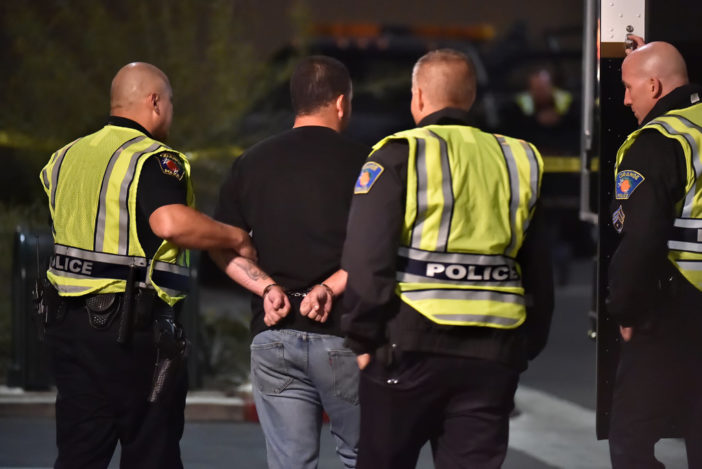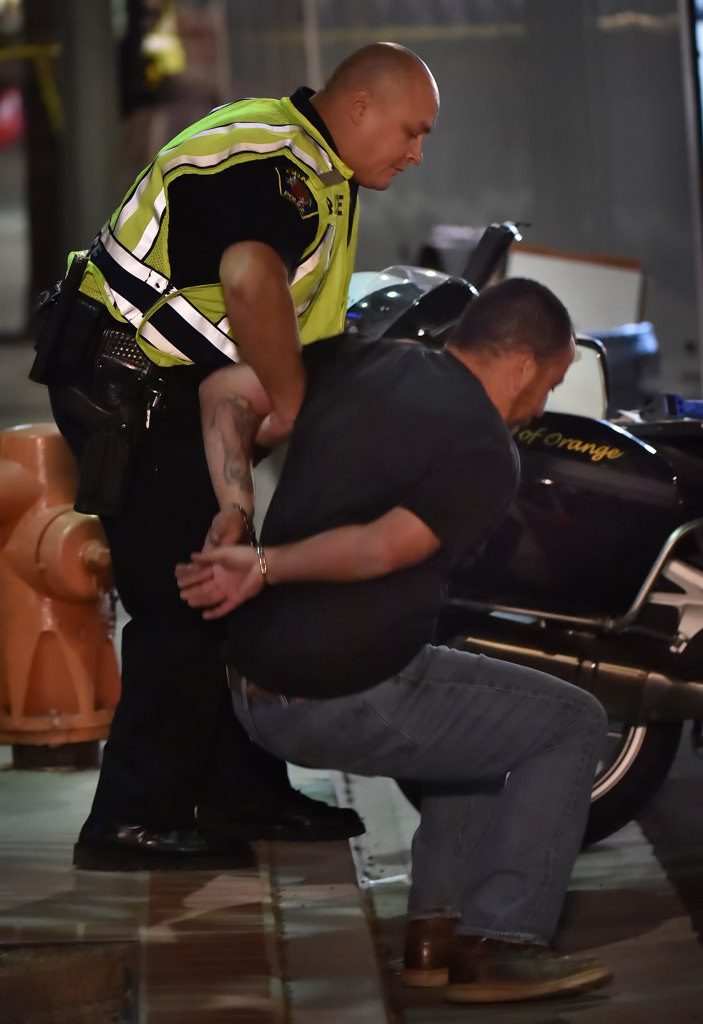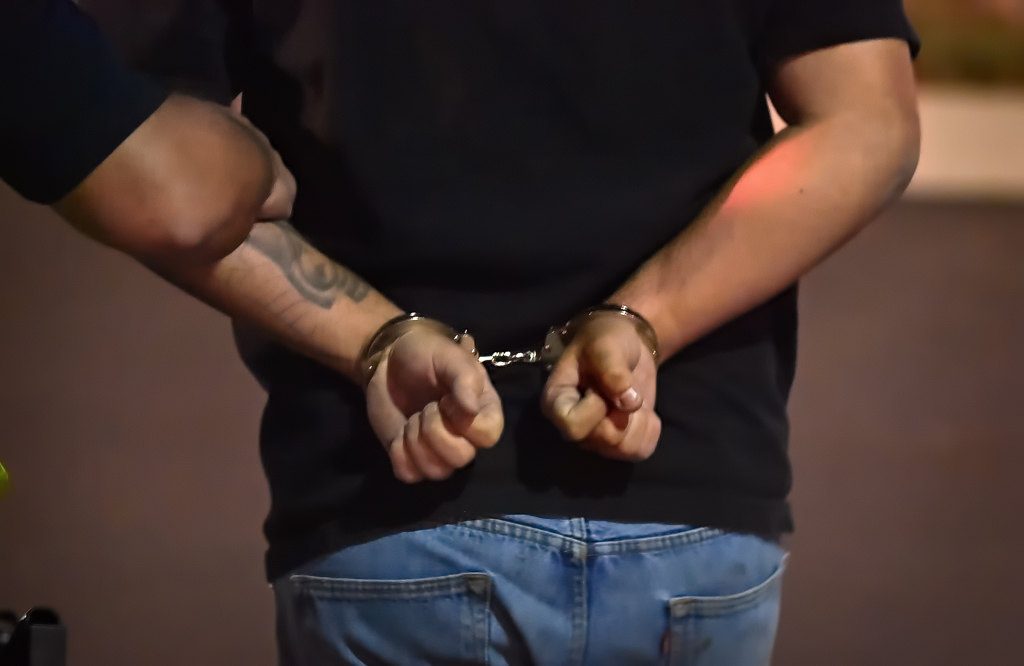Nearly every motorist passing through the Orange Police Department’s DUI/driver’s license checkpoint along the westbound lane along Chapman Avenue showed their license to the officer and were on their way within seconds.
For a few others, the trip through the recent checkpoint didn’t go so smoothly.
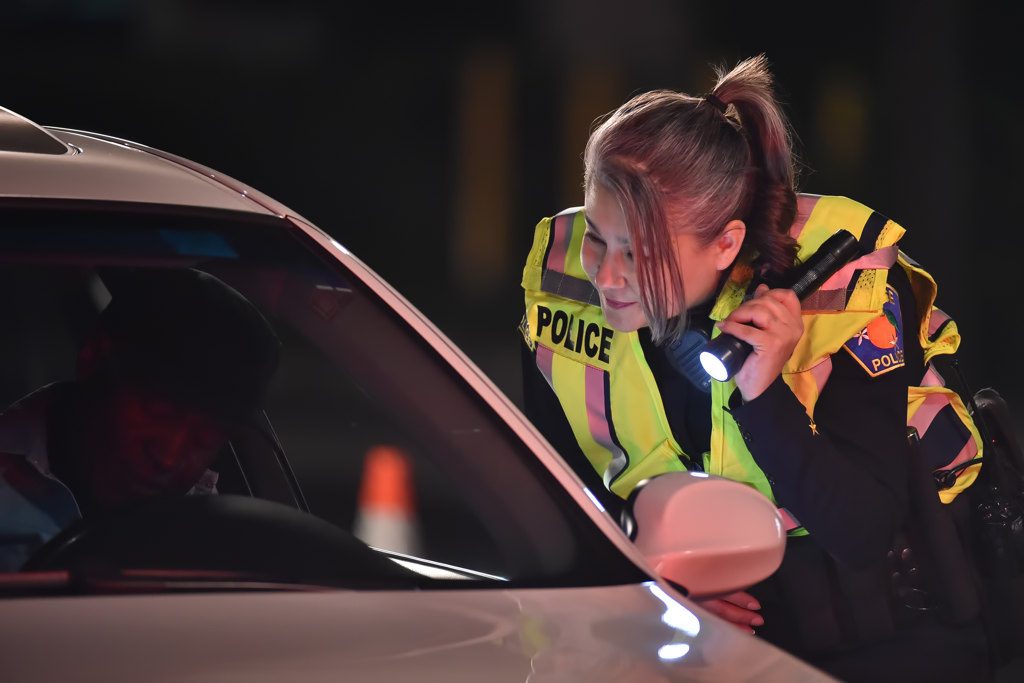
Orange PD Det. Leslie Franco asks for a driver’s license at a DUI checkpoint on Chapman Avenue.
Photo by Steven Georges/Behind the Badge OC
The Orange PD conducts the sobriety checkpoints in accordance to legal requirements set forth in case law such as Michigan v. Sitz and Ingersoll v. Palmer.
“We take into account DUI arrests/collision data, traffic patterns, safety, and where alcohol- and or drug-related accidents have occurred in the past,” said Sgt. Rob Thorsen, who supervises the checkpoints.
Checkpoints are meant to promote public safety, serve as a deterrent to potentially impaired drivers and to educate the public of the dangers associated with drinking and driving, Thorsen said.

Orange PD Officer John Nisperos checks for a driver’s license at a DUI checkpoint on Chapman Avenue.
Photo by Steven Georges/Behind the Badge OC
“Thankfully, the large majority (of drivers) are licensed and being responsible,” Thorsen said. “Most people understand we are trying to do a good thing and keep our community safe. They are happy to see us out here.”
A small handful of drivers exhibited signs of intoxication.
Those drivers, when contacted by one of four officers on the “line,” were asked to exit their vehicles, and walked to the nearby curb for more definitive testing.

Orange PD Det. Chris Moten climbs onto a truck to talk to the driver in the cabin during a DUI checkpoint.
Photo by Steven Georges/Behind the Badge OC
Officer Colten Ivans, a certified drug recognition expert, administered a series of field sobriety tests that included a horizontal gaze nystagmus test.
The test involves the driver following the tip of a pen with his or her eyes.
When intoxicated, a person’s eyeballs will jerk, a condition called a nystagmus.
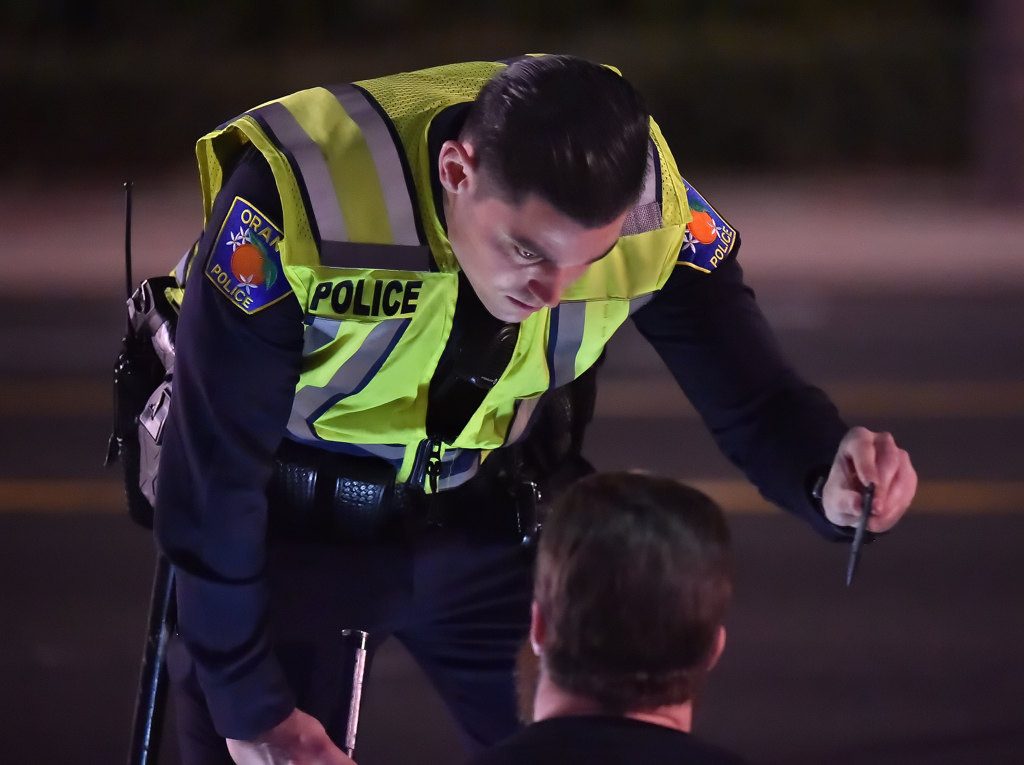
Orange PD Officer Colten Ivans, the department’s full-time DUI officer, gives a series of tests to a driver at a DUI checkpoint. After taking the tests and then failing the breath test, the suspect was taken into custody.
Photo by Steven Georges/Behind the Badge OC
Ivans looks for six clues to estimate a level of intoxication.
One driver who was tested acknowledged drinking alcohol, but displayed only two of the six.
“If you have four out of six, there is an 88 percent chance that the person is at a .08 percent or higher (blood alcohol level),” Ivans said. “He was displaying two. I’m confident to say that he is able to drive.”
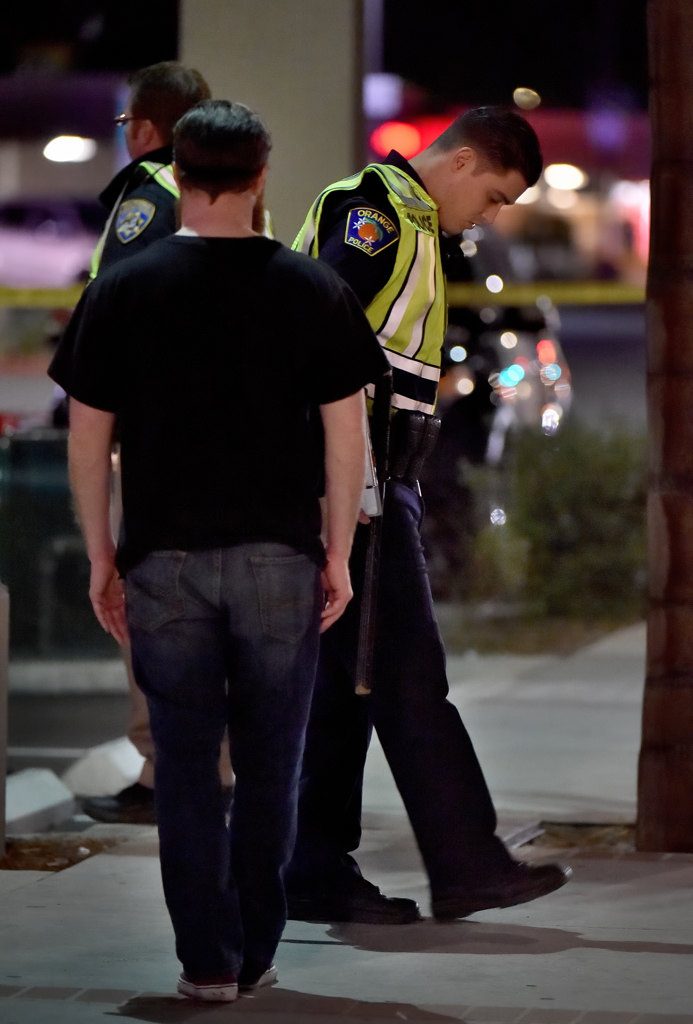
Orange PD Officer Colten Ivans demonstrates how to perform one of the DUI tests to a suspect that was pulled over during a DUI checkpoint on Chapman Avenue.
Photo by Steven Georges/Behind the Badge OC
A second driver tested by Ivans didn’t perform so well and was ultimately asked to blow into a breathalyzer.
“He exhibited signs and symptoms of driving under the influence of alcohol,” Thorsen said.
That driver was arrested.
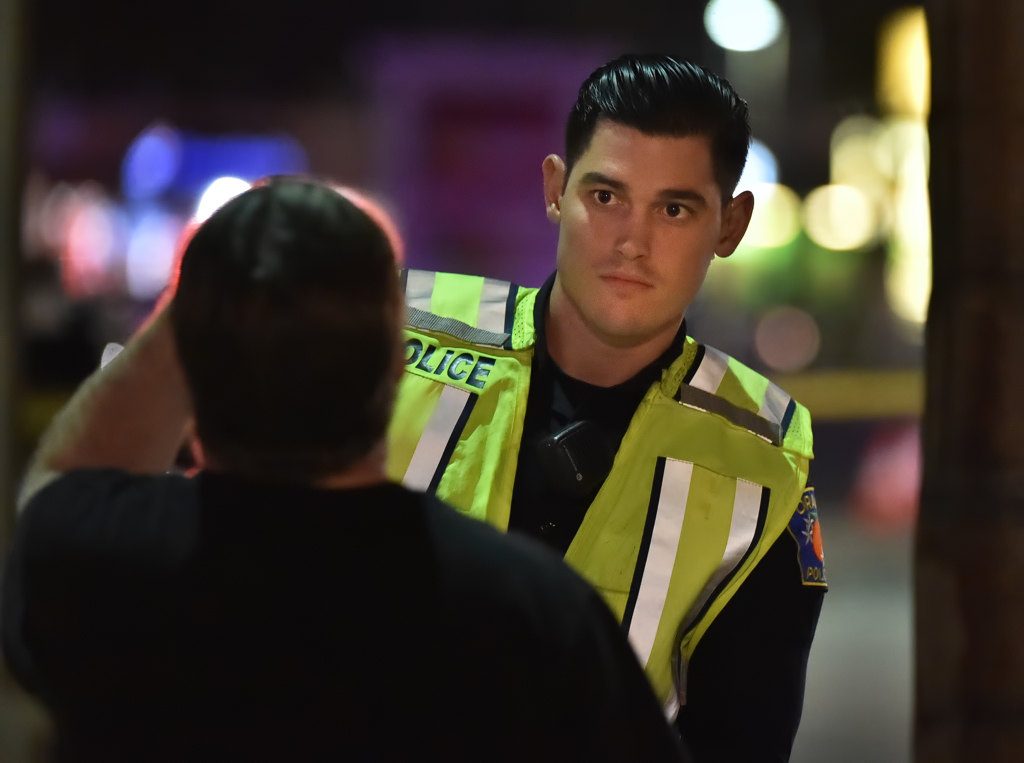
Orange PD Officer Colten Ivans administers a series of tests to a driver who was pulled over at a DUI checkpoint.
Photo by Steven Georges/Behind the Badge OC
The Orange PD goes above and beyond the legal requirements to inform the public as to the date and time of the checkpoints through news releases and social media. Highly visible signs announcing the checkpoints are positioned well ahead of the checkpoint itself. Per the state law, drivers entering a DUI/DL checkpoint are required to stop and provide a driver’s license.
The Orange PD holds about 12 sobriety checkpoints every year, Thorsen said.

Orange PD Officer Colten Ivans administers a breath test to a driver who was pulled over at a DUI checkpoint. After failing the test, the suspect was taken into custody.
Photo by Steven Georges/Behind the Badge OC
The department also holds roving DUI saturation patrols throughout the year in which officers are focused on identifying and arresting impaired drivers, the sergeant said.
The Orange PD partnered with the California Highway Patrol for the Dec. 15 checkpoint — a first-ever partnership between the two agencies, Thorsen said. The checkpoints and roving DUI patrols are funded by grants from the Office of Traffic Safety.
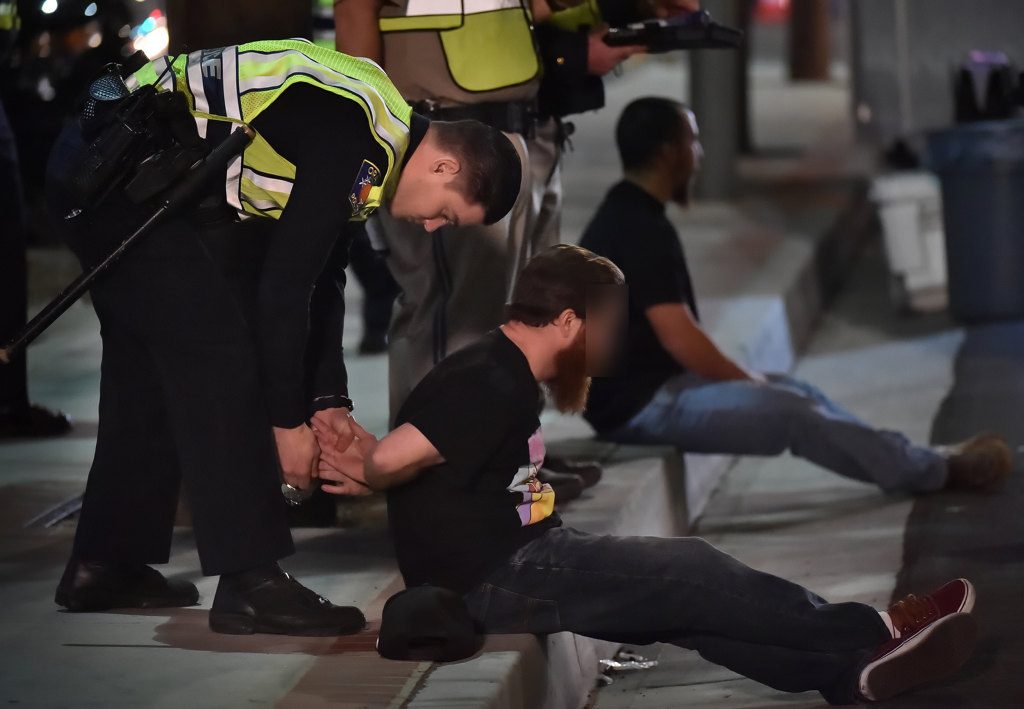
A driver who was pulled over at a DUI checkpoint is taken into custody by Orange PD Officer Colten Ivans after failing a series of DUI tests.
Photo by Steven Georges/Behind the Badge OC
The Orange PD applies for the grants every year.
“Our goal is to keep the community safe and get impaired drivers off the road,” Thorsen said.
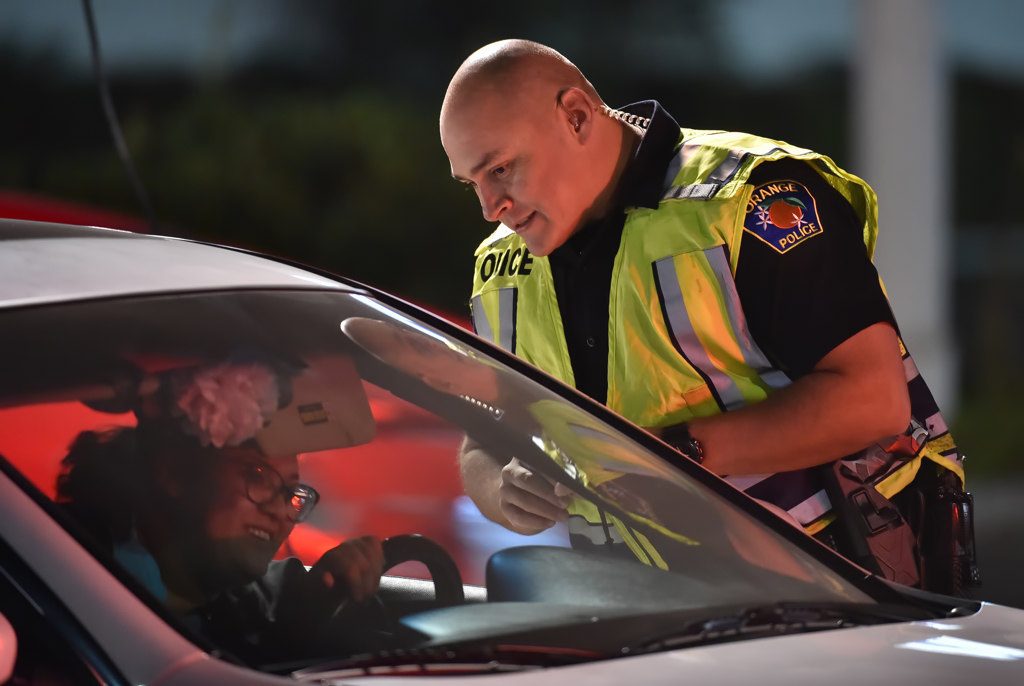
Orange PD Officer Carlos Gutierrez talks to a woman at a DUI checkpoint on Chapman Avenue in Orange. Every car that drove through the checkpoint was stopped.
Photo by Steven Georges/Behind the Badge OC

Orange PD Det. Chris Moten talks to a driver during a DUI checkpoint on Chapman Avenue.
Photo by Steven Georges/Behind the Badge OC
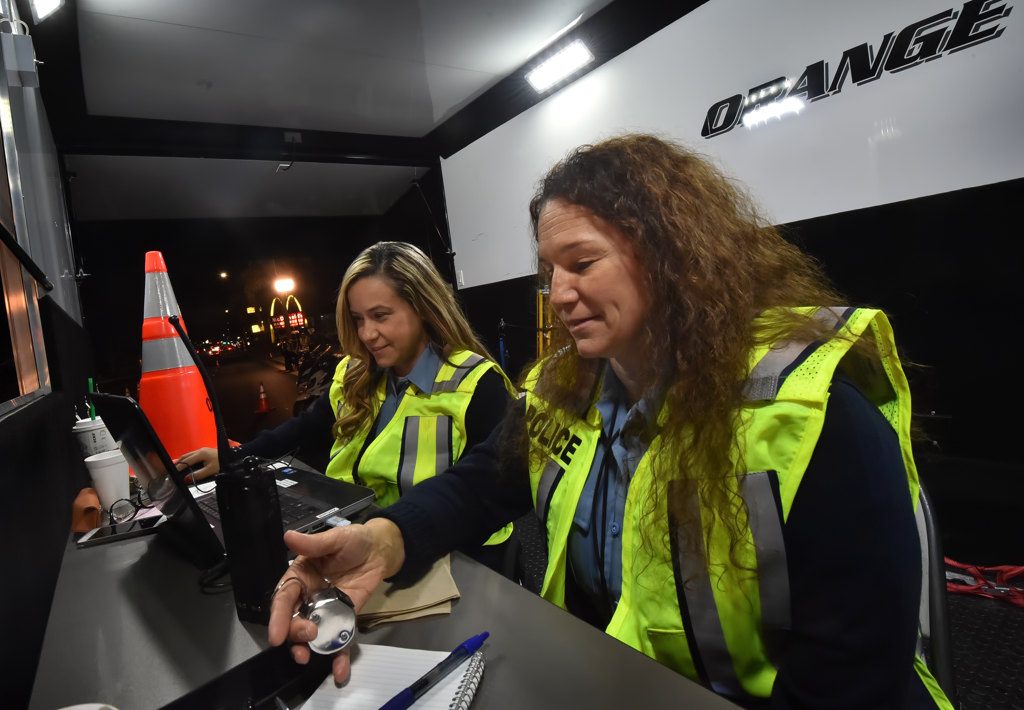
Yolanda Flores (left), senior police clerk for the Orange PD, and Amy Carr, training coordinator, count cars as they record all statistics for the DUI checkpoint on Chapman Avenue.
Photo by Steven Georges/Behind the Badge OC

CHP Officer Ken Yoon checks for driver’s licenses at a DUI checkpoint on Chapman Avenue.
Photo by Steven Georges/Behind the Badge OC
 Behind the Badge
Behind the Badge
